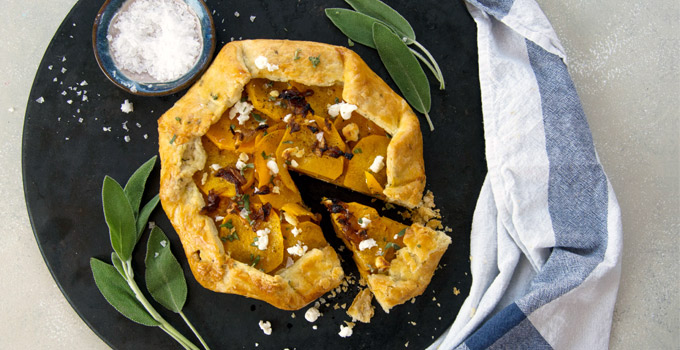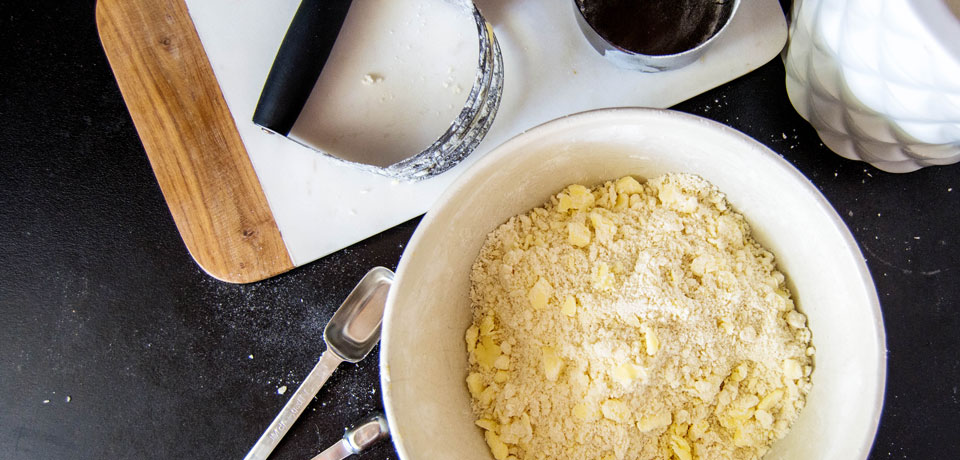Having a tender, flaky pie crust recipe is essential for any baker’s repertoire. Making one from scratch may seem intimidating, but you’ll be successful every time if you follow this recipe and these steps.
Ingredients should be very cold.
Freeze your butter and shortening. When mixing flour and fat, you want the fat to break down, but not disappear. You still want to see pea-sized pieces of butter – they create steam pockets while baking and this creates flaky layers – and this is easiest to do when the fat is frozen. Use ice-cold water. This will help to keep the fat cold while you’re working with it. Only use a tiny bit of water at a time. Water is what starts the gluten-formation process and this is the enemy of a good pie crust.
Don’t overmix the dough.
The more you work it, and the more water you add, the more gluten develops and the tougher the crust gets. Work the dough gently and stop while you can still see small lumps of fat – this will yield a gorgeous, flaky crust. Instead of kneading the dough with your whole hand like you do with bread, gently use your fingertips to work the dough until the flour has been combined and incorporated.
Always let it chill.
It’s crucial to allow the dough to chill in the fridge for a minimum of one hour. This resting process gives the gluten a chance to relax and hydrate (wet and dry ingredients being absorbed into each other). If you don’t, you can end up with a tough crust that is harder to roll out.
Once it’s rolled, keep it cold.
Once you’ve rolled your dough out and have it in the pie plate, pop it back in the fridge or freezer while you prepare your fillings. This will help prevent the crust from shrinking while baking.

Is blind baking necessary?
Blind baking is the process of baking the crust without any fillings inside. This is necessary in two instances:
- If you’re making a pie where the moisture in the filling might make the crust soggy, such as a pumpkin pie, or even a quiche.
- If the pie filling does not require any baking, such as with a custard-based pie like banana cream or lemon meringue.
Pie crusts can be used with a variety of fillings and applications: sweet to savoury, tarts to galettes. As you’ve likely noticed, one of the biggest tips to a great crust is temperature – keeping everything cold. Calgary Co-op also has 9 tips for an amazing pie crust to help you on your way.
Like many things, making the perfect pie crust is a skill that is developed and refined with experience. So take your time, enjoy the journey and get baking.






